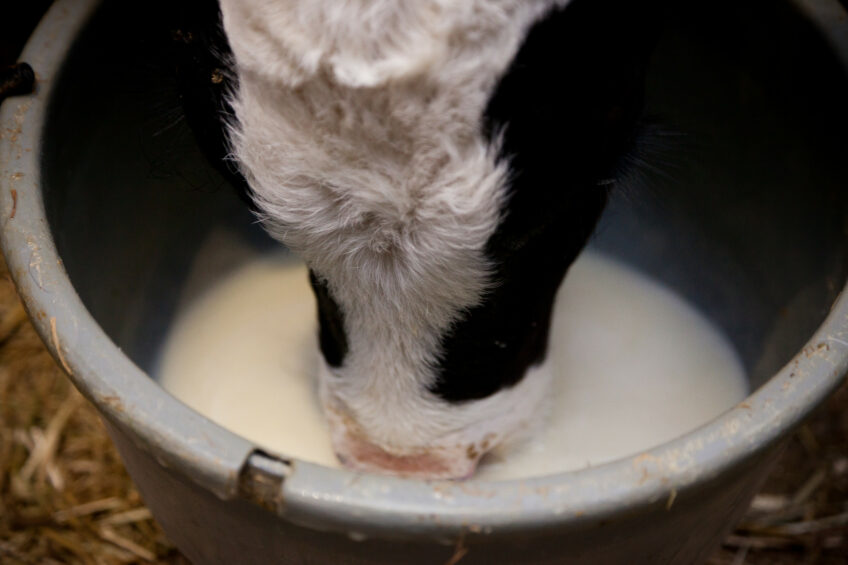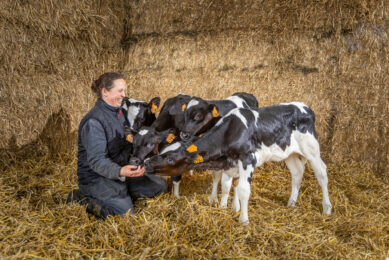Milk with residues: Feed for calves?

Dairy calves fed milk from cows treated with antimicrobials have a higher probability of excreting resistant bacteria through their faeces than those who aren’t.
This is one of the conclusions of an EFSA scientific opinion on the risk of antimicrobial resistance associated with feeding milk containing antimicrobial residues to calves. Feeding of calves with milk containing residues of antimicrobials on the farm of origin is not generally prohibited in the EU and potential national regulations on this practice are not harmonised.

To get a grip on the situation, EFSA sent out a questionnaire to all member states (MS) on the use of antibiotics in dairy for their particular country and to what extent this milk is fed to dairy calves. Of the 24 MS responding to the questionnaire, 16 provided estimates of the proportion of farms that used milk from cows treated with antimicrobials as feed for calves, whereas eight MS provided no estimate. EFSA also did an extensive literature review on this topic. The results have been recently published in the EFSA journal.
Often common practice
Results from the questionnaire showed that France and Slovenia stated that using milk from treated cows for calves was ‘common practice’ for both male and female calves. Bulgaria stated that no farms use waste milk as feed for calves. Cyprus, Spain, Hungary estimated that milk from treated cows was used for male calves on all farms. In Denmark, Croatia, Italy, Luxembourg, Malta, the Netherlands, Slovakia, and the UK, it was estimated that milk from treated cows was used for both male and female calves on 4–100% of the farms depending on the country. Two MS provided more detailed information. In Finland, milk from treated cows is given to both male and female calves on all farms but only after treatment has been completed, i.e. during the statutory withdrawal period for human consumption. Milk from cows treated with benzylpenicillin can be used also during treatment if it is treated with β-lactamase to destroy potential residues. In Sweden, colostrum is given to both female and male calves on almost 90% of the farms and milk from cows treated during lactation is used during treatment and during the withdrawal period on 56% and 79% of the farms, respectively.
Carry-over to milk and colostrum
Feeding milk from treated cows can result in more resistant bacteria in the calves’ gut. In a recent national project from the Netherlands related to the antimicrobial resistance development in young calves (2013), Gonggrijp et al. (2015) investigated the compounds and concentrations found in 118 colostrum samples. 67% of the colostrum samples did not exceed the MRL concentration of any antimicrobial applied, 29% of the samples contained cloxacillin at a concentration above the MRL with a median concentration of 86.5 μg/kg and a mean of 229.8 μg/kg, 3% exceeded the MRL concentration of ampicillin, and 1% of penicillin).
In other studies it was found that an increased proportion of antimicrobial-resistant faecal bacteria are shed when calves are fed milk containing antimicrobial residues at subtherapeutic doses. In the case of colostrum, earlier studies found that no effect was observed of feeding calves colostrum from cows treated with penicillins and aminoglycosides at drying-off or waste transition milk. This observation is limited to E. coli and to treatment with penicillins and aminoglycosides and is not confirmed by other studies with other antimicrobials.
Reducing AMR: A priority for EU
Based on the data gathered from the EU members states, combined with the existing knowledge and literature on the formation and shedding of antimicrobial resistant bacteria, EFSA states that feeding milk and colostrum of cows treated with antibiotics can enhance the probability of calves excreting resistant bacteria through their faeces. Combatting antimicrobial resistance is a priority for the EC, which launched a 5-year Action Plan in 2011 against the rising threats from AMR, based on a holistic approach, in line with the ‘One Health’ initiative.
Join 13,000+ subscribers
Subscribe to our newsletter to stay updated about all the need-to-know content in the dairy sector, two times a week.










